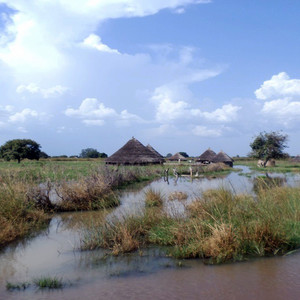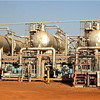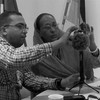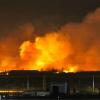Priced Beyond Belief
Sudan is a big country but Khartoum is bulging at the seams. Swollen by decades of shortages, famine and civil war, the capital’s population number has exploded, putting enormous pressure on land resources. Rocketing prices of real estate and building materials mean ordinary families can only dream of owning a home in Khartoum.
Ghulam Din Osman, Secretary-General of the National Fund for Housing and Reconstruction, has spoken of a crisis of urban housing”. These days land prices in central Khartoum vary from half a million to a million U.S. Dollars for up to 1,000 square meters. Studies attribute these prices to government policies such as land privatisation, high demand, a soaring inflation rate and the weakness of the Sudanese Pound.
 While some industry insiders are baffled by the steep prices, another industry insider, who prefers to remain anonymous, said the near total collapse of other economic activity was leading people with money to invest in real estate, which holds its value against inflation and a decline in the currency.
While some industry insiders are baffled by the steep prices, another industry insider, who prefers to remain anonymous, said the near total collapse of other economic activity was leading people with money to invest in real estate, which holds its value against inflation and a decline in the currency.
But in addition to the prohibitively expensive land, citizens also face sky-high prices for building materials.
The journalist Yasser al-Kurdi recently probed this topic in the Sudani newspaper. In his research ‘Land Prices in Khartoum. Houses of Fire’, he calculated the cost of building a house with two bedrooms, two bathrooms and a sitting room to be 127,800 Sudanese Pounds, around $18,800.
Meanwhile salaries in the public sector vary between 400 and 1,500 Sudanese Pounds per month, or around $60 and $250.
Material costs account for two thirds of that price and the remaining third pays for labour. The cost of building a modest house – without land – would equal the gross salary of a civil servant for a decade.
Osman’s report to the Council of States comments on this, linking the high construction costs to increasing government tariffs on materials.
Duties can sometimes reach 100%, with value added tax another 17% and services an estimated 1% on top of that. Labour costs and the price of hiring construction machines have also gone up, and the secession of Southern Sudan has contributed to this. Before 2011, most labourers were Southern Sudanese and their disappearance from the market has created a shortage and triggered wage rises.
Building is also subject to what might be called ‘freelance’ taxation by local authorities. There are various collection points on Sudan’s roads established by levels of local government. This occurs in spite of decrees from the central government which abolished local levies, however, the practice continues as local governments are broke.
I pay less getting a shipment of iron from East Asia to Port Sudan than I then do getting it out of the port,” said one iron and cement importer. Cement prices in Sudan are higher than in neighbouring countries, even cement manufactured locally. Imported cement is highly taxed under the pretext of protecting local production. And yet locally produced cement has more than doubled in price due to fees and levies imposed by central and state government. Left to themselves, factories could sell cement for 300 Sudanese Pounds per tonne and still make a profit. In fact, the market price is now 700 Sudanese Pounds,” he said. This means that fees exceed 125%.”
But the question is whether exorbitant prices will affect the cultural preference for sprawling housing compounds. In Sudan such buildings are a status symbol for the owner and their often large, extended families.
Some say that the emergence of an apartment culture might take generations. But a real estate developer disagreed, pointing out that the number of apartment blocks is now on the rise. He attributed this shift to two factors: First, apartments allow many ordinary Sudanese to live relatively close to the centre of Khartoum, the focus of government and market activity. Second, the emergence of apartment development as an investment market, a sector with relatively healthy profits.
What we reject today, we may accept tomorrow.”
Of course, Sudanese preference remains for the traditional building style, he said. But taste is gradually adjusting towards practical issues such as the need to be connected to utilities and transport networks. The model residential development of al-Nasser in the district of Haj Yousif, east of Khartoum, was widely shunned for a decade because it was too far from the city centre. But once the Mansheya Bridge between Khartoum and Khartoum North opened, shortening the travel distance, property prices increased sharply and it became a popular place to live.
Over time the change in housing patterns may change social structures too, as a new generation of Khartoum residents gets used to apartments and less extended families. Here, the influence of Sudanese returning from overseas plays a role. Who said that we will maintain a single housing style?” asked the property developer. What we reject today, we may accept tomorrow. We may take decisions that are not based on our taste but rather because circumstances demand it.”





